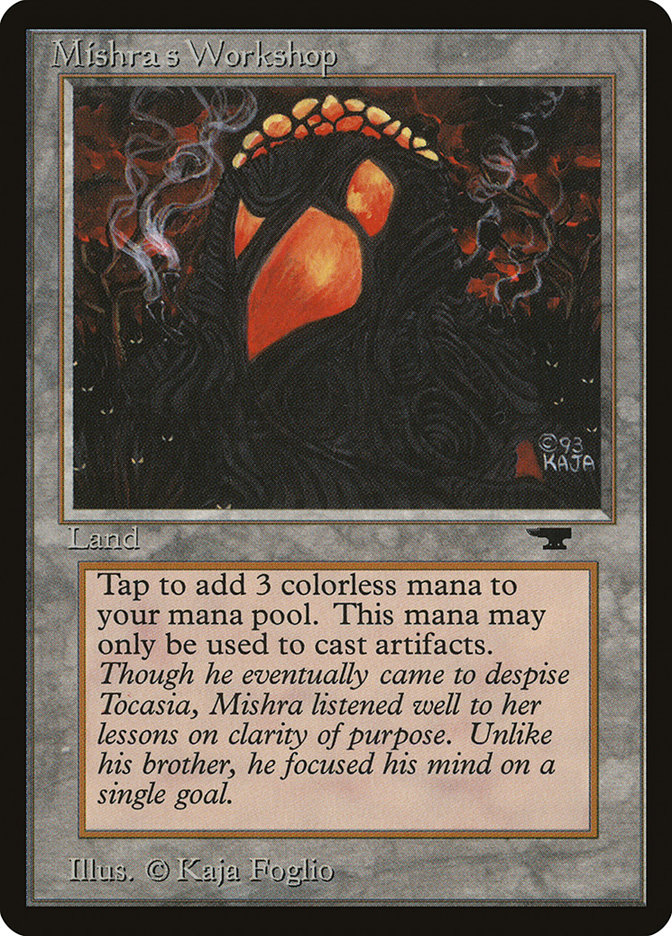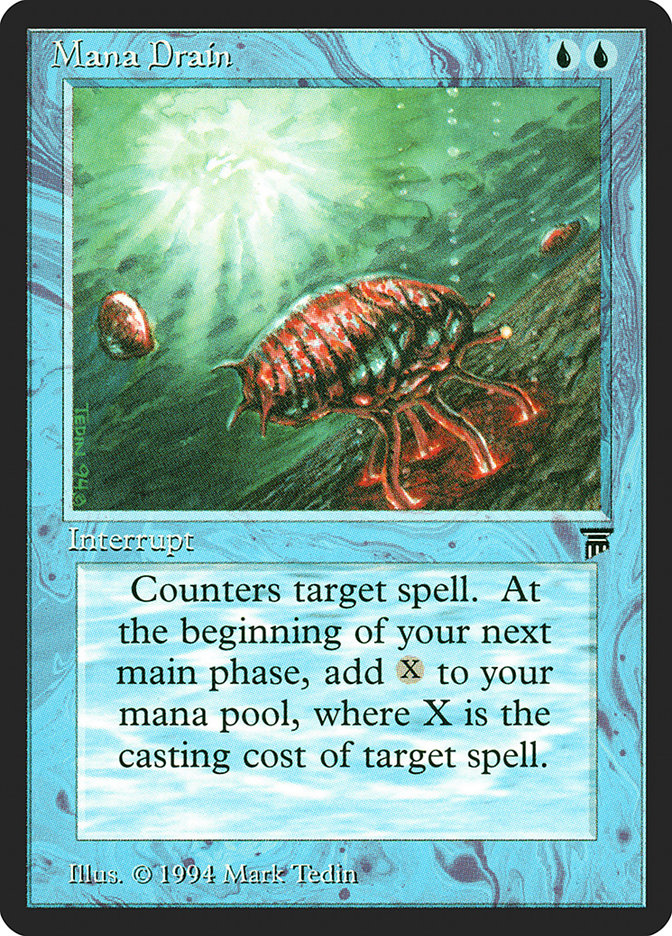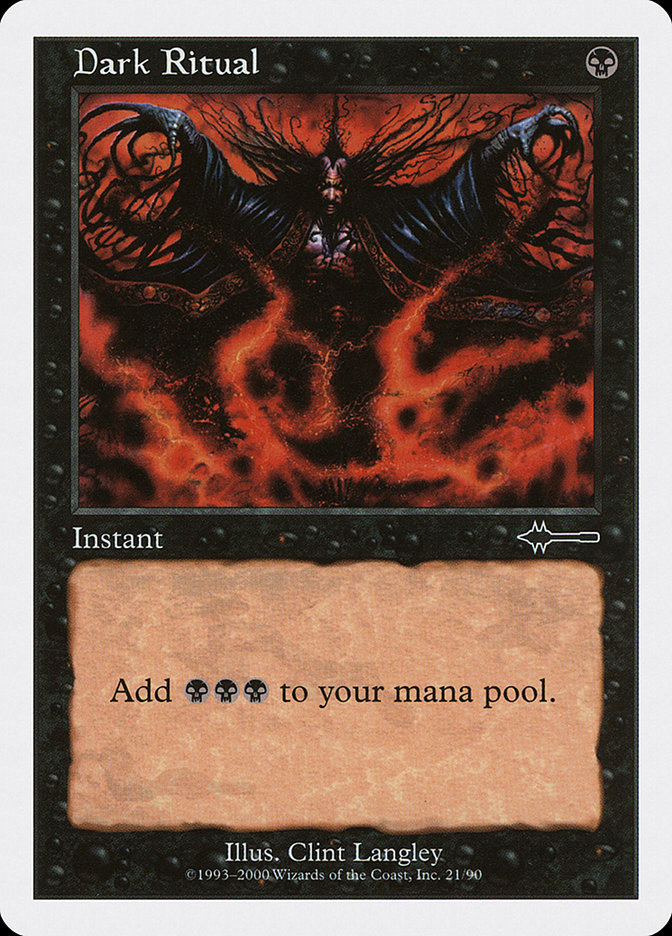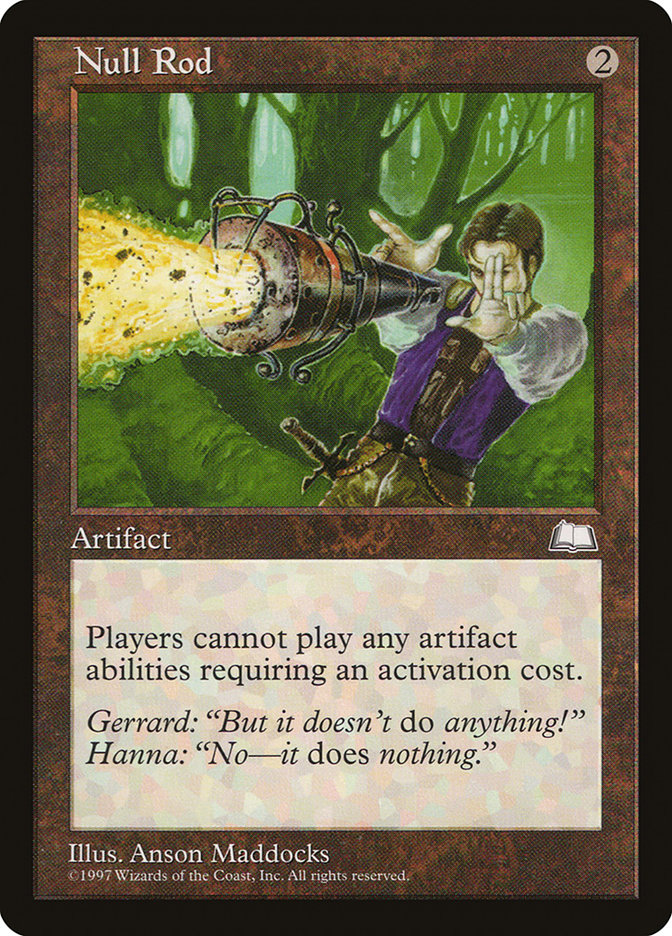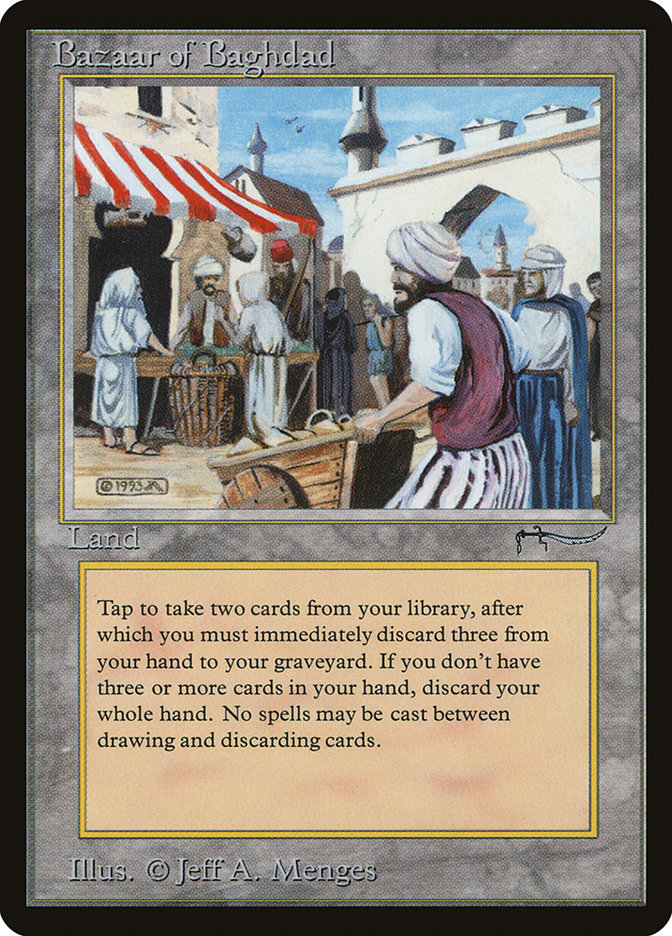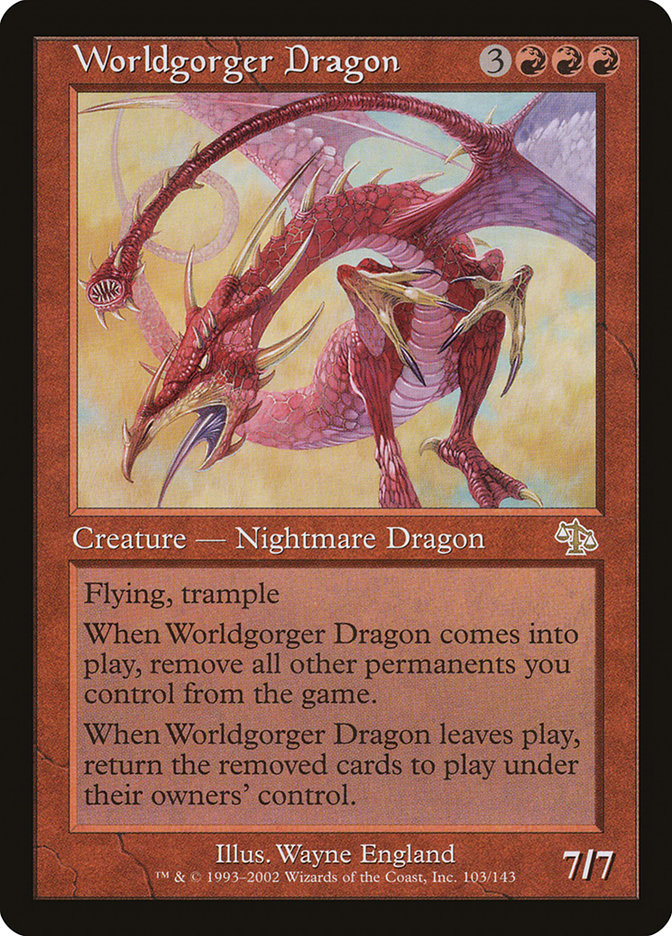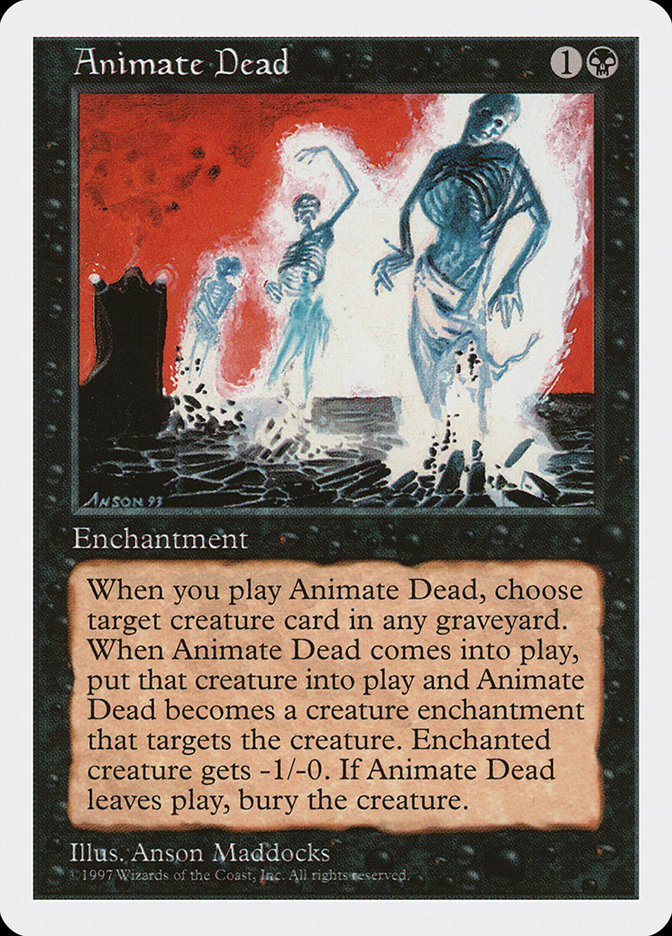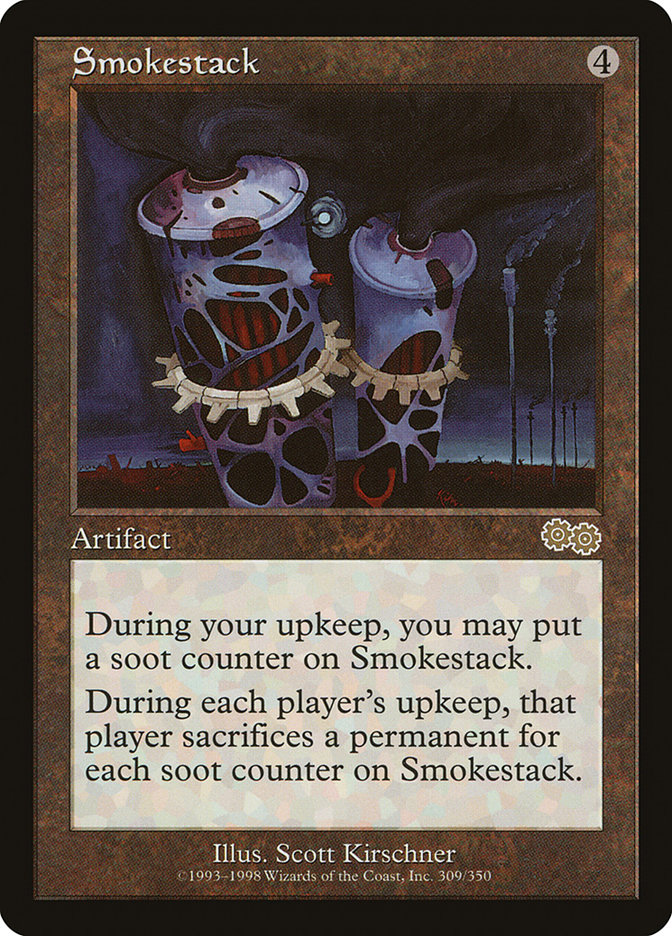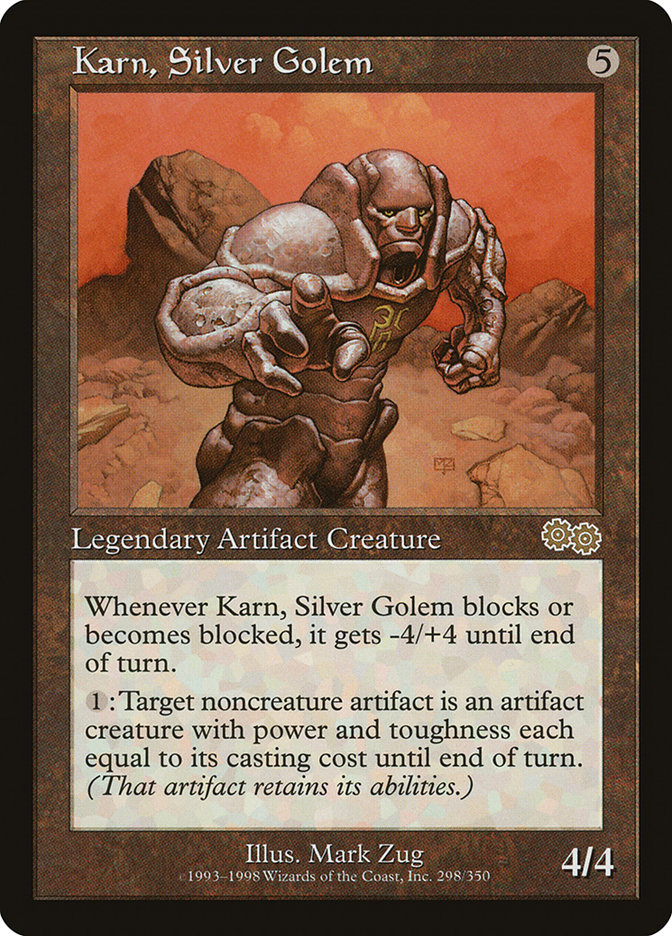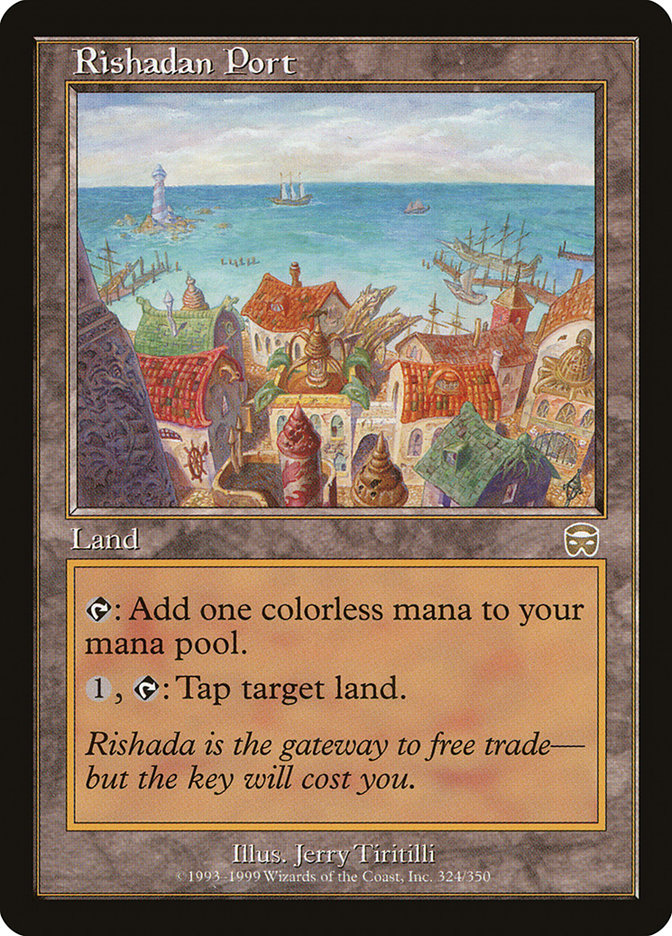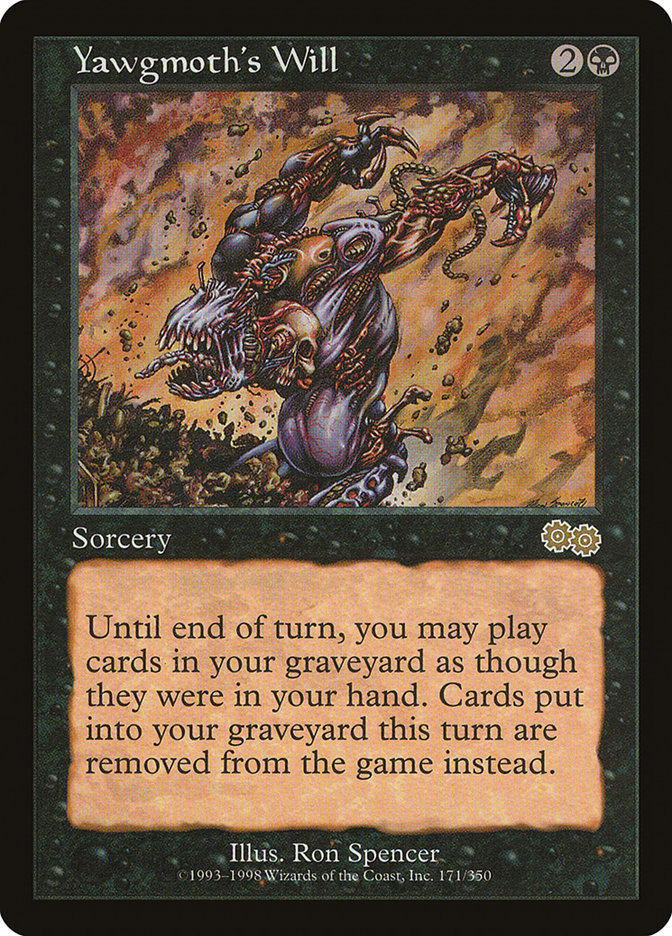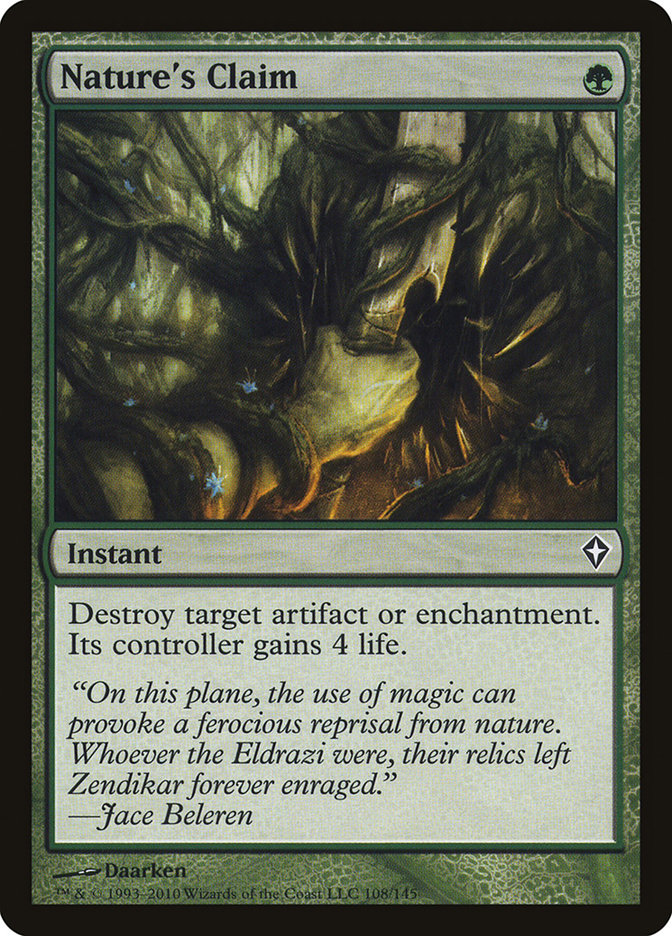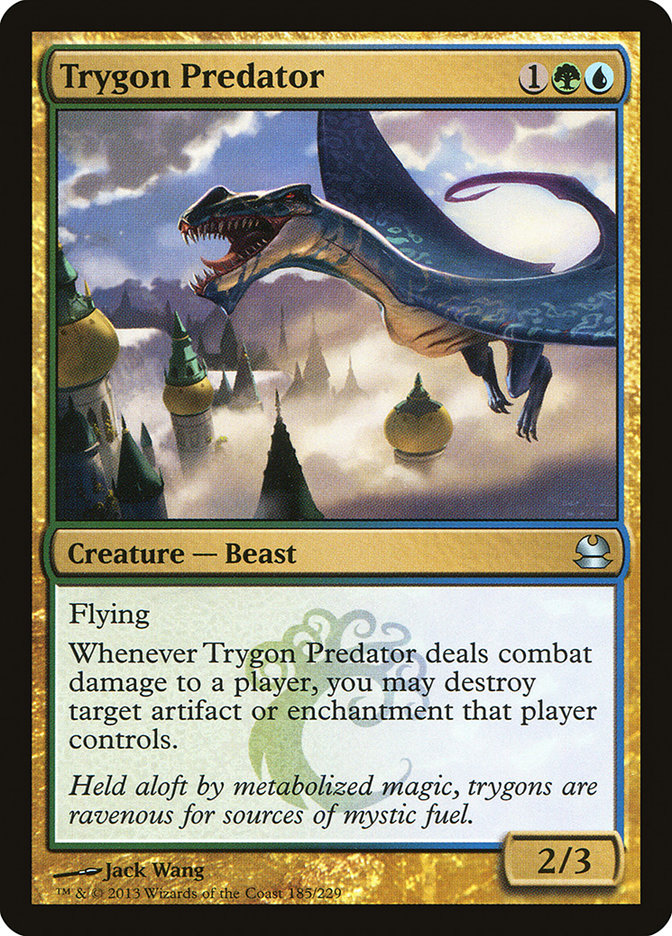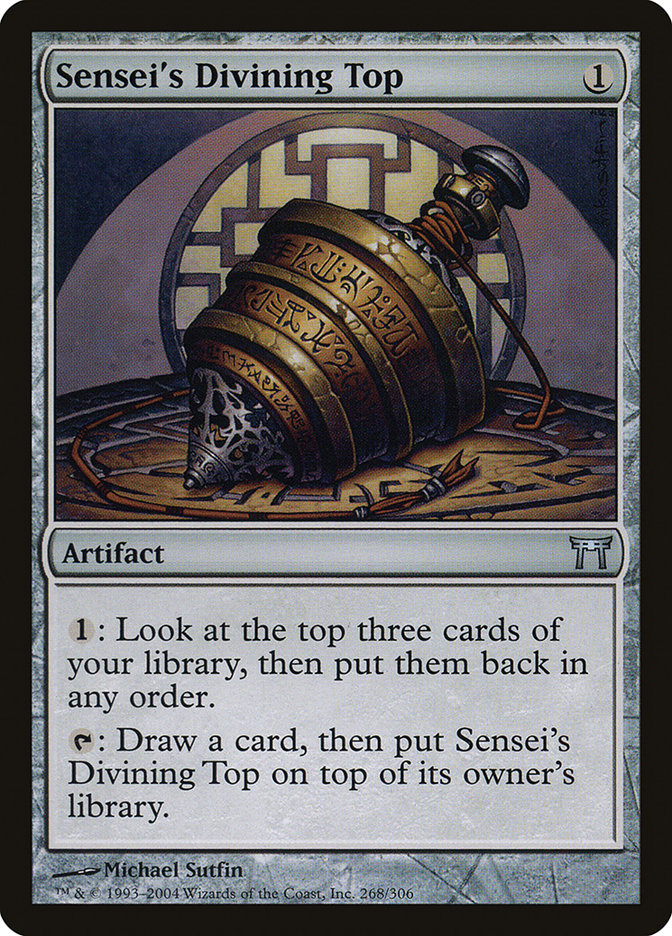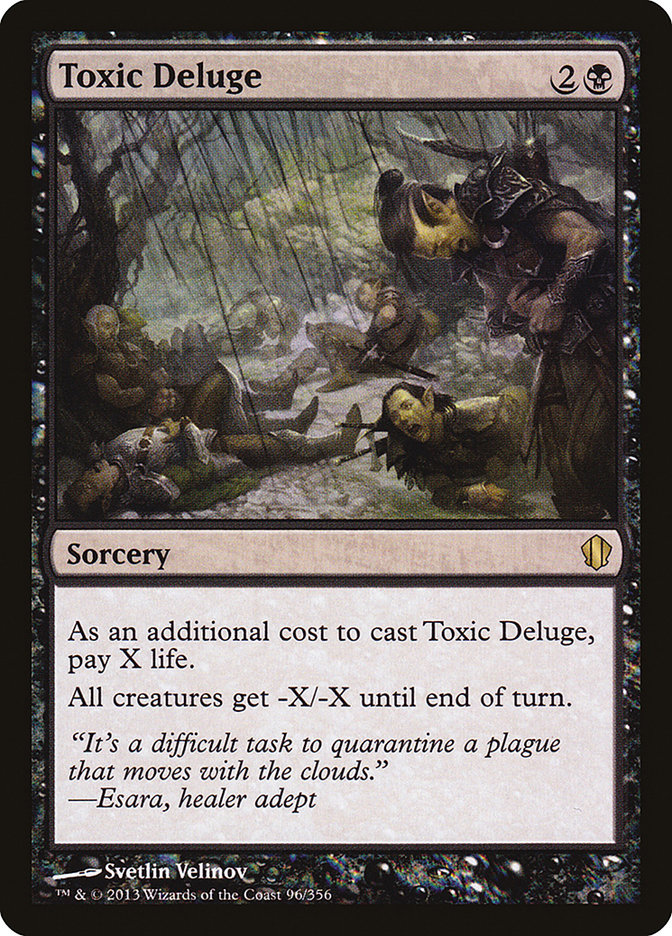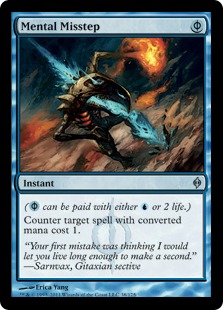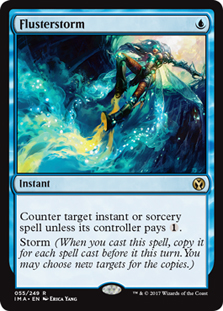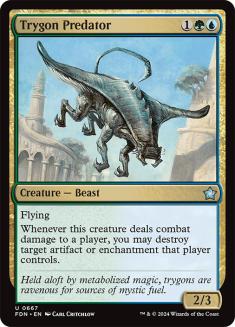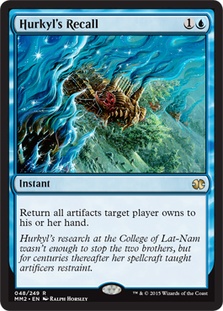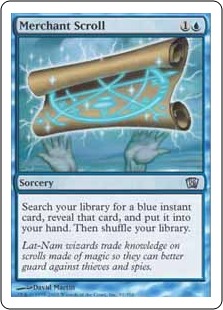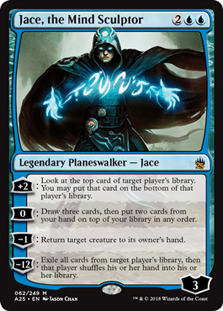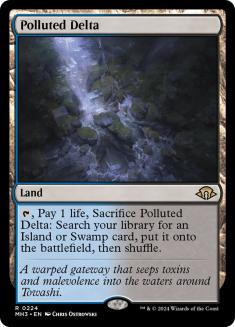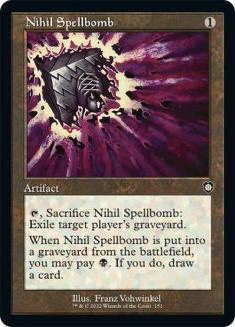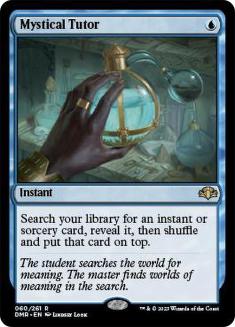At the moment I am completely enamored with playing Vintage.
After spending an entire week surveying Vintage decklists, poring over Vintage Top 8 results, and studying for my two-part 2013 Vintage Year In Review series, it was a foregone conclusion that by the end I was itching to jump back into the fray and play some games.
Last weekend I attended a Vintage tournament at RIW Hobbies (my local game store) and was very excited for the opportunity to play my favorite format. The event got a modest turnout of eighteen players, which is very decent for a first-time tournament that was promoted on relatively short notice. One of the cool things about Vintage is that even with a small turnout the events always tend to be exciting and competitive because players usually know what they’re doing and have powerful decks.
Since I don’t get to play a ton of Vintage (compared to how much I enjoy the format and used to play), I put quite a bit of time into my preparation for the event. I tried out a couple of different decks that I had brewed and tuned that I thought I might want to play with friends during testing.
Although I clearly couldn’t play everything I worked on (so many decks, so little time), the testing I put in ultimately led me to play a deck with which I was able to win the tournament!
Let’s take a quick look at the decks that I almost played.
Espresso Stax
After writing my 2013 Vintage Year In Review, I came to the conclusion that Mishra’s Workshop and BUG decks were currently the premier decks in the format in regards to how frequently they get played and how well they tend to perform. Knowing this information going in, I wanted to play a deck that would perform well against both of these popular archetypes.
My name was almost MUD.
My instinct was that because Mishra’s Workshop is a busted card that it would likely have an advantage in the head-to-head matchup against BUG. So I went into the weekend believing that MUD seemed to be on an upswing and was likely decently positioned for the moment. I also felt that Smokestack would be a tremendous card against BUG because they don’t have a ton of board presence and also because it avoids getting hit by Abrupt Decay.
Most people tend to think of me as a pretty stalwart Mana Drain player, but the truth is that I have put in my time as a Mishra’s Workshop mage as well. There was a solid year-long period when Psychatog was the deck to play where I religiously sleeved up my Smokestacks and Mishra’s Workshops. Although that was many years ago now, because of the extensive experience I have piloting the deck I always feel comfortable slipping back into the role and playing prison.
I have a lot of respect for the Mishra’s Workshop archetype and the power level that it brings to the table. It takes a lot to be a true tier I pillar of Vintage, and Mishra’s Workshop is the truest pillar of them all. There has always been and always will be a premier Vintage deck that starts off with four Mishra’s Workshops and then adds 56 other cards.
If you think about it, what other pillar has ever so consistently existed in Vintage?
People don’t play four Mana Drains anymore.
Not exactly at the top of the food chain right now.
It seems like sometimes we go a year without seeing a Null Rod deck.
Probably the closest thing to a true long-standing pillar.
Remember that Bazaar of Baghdad was also there at the beginning . . .
Is it cool if I go infinite in 2002?
Bazaar of Baghdad decks have always been around and always been competitive. However, I would argue that Bazaar decks do not see nearly the same frequency of play as Workshop decks. I wouldn’t fault somebody for saying that Bazaar of Baghdad is on the same power level as Mishra’s Workshop. However, as far as sustained influence on the metagame, Mishra’s Workshop is always at the top and is probably the most influential card with regard to shaping the Vintage metagame.
There is no doubt in my mind that if Mishra’s Workshop didn’t exist the Vintage format would look completely different and would be worse for it.
Dredge was also on my radar as a potentially very solid deck choice for the tournament.
Anyway, my process started with the true classic in the form of playing an Espresso Stax variant.
Creatures (7)
Lands (22)
Spells (31)

If I were to play in a Vintage tournament right now with a Mishra’s Workshop deck, the Espresso Stax decklist above is the exact 75 that I would take with me.
Does it have my favorite Workshop cards? Check!
Given that BUG is such a popular deck at the moment, I think that playing the card Smokestack has a ton of upside. Since Smokestack has a converted mana cost of four, it is a hugely powerful threat that is immune to BUG’s Abrupt Decays. Also, BUG decks tend to be reliant on playing a more "fair" game of Magic and don’t tend to overload on Moxes, which means that they’re vulnerable to getting Stacked out.
You don’t trade with the Port; the Port trades with you.
I initially started my Workshop deck with Goblin Welders and only had one Rishadan Port. As I played more and more games, I felt that the Welders just didn’t pull their weight, and every time I drew Port it was excellent. The end result was that I just kept adding Rishadan Ports until I was maxed out, and they were never bad.
As Espresso Stax is really just a land-destruction deck, the Ports function as copies of Wasteland, which I was very happy to have. Another thing that I will point out is that Port can lock down basic lands, which was often backbreaking. Also worth noting is that you can use the Port to target fetch lands in order to make your opponent crack them, which against decks that have to fetch nonbasics leaves the opponent vulnerable.
Bant Midrange
The next deck that I wanted to investigate was Bant Midrange. I am obviously predisposed to the deck because I innovated it a couple of years ago and have always done well playing it, but I also thought that there were a couple of good reasons to bring the deck back for an encore performance.
The Cruel Ultimatium of creature mirrors.
I think that True-Name Nemesis is an absurdly powerful Magic card. It is a three-mana Progenitus, and I don’t think that the card has been utilized to its full potential in Vintage yet.
With BUG being such a popular deck at the moment, I felt that playing the best True-Name Nemesis deck had a ton of upside because TNN is so good against BUG.
In trying to figure out the best thing to do with TNN, I was fairly certain that one of the top things on the list would be to put an Equipment on it and start bashing face.
Do people even play Equipment in decks that don’t play Stoneforge Mystic?
Anyway, Bant Midrange provided me with a shell to take advantage of the strategies I wanted to use to attack the metagame.
Creatures (12)
- 2 Trygon Predator
- 3 Noble Hierarch
- 1 Qasali Pridemage
- 2 Stoneforge Mystic
- 2 Snapcaster Mage
- 2 True-Name Nemesis
Planeswalkers (2)
Lands (19)
Spells (27)

I really like everything that this deck is doing. It has a lot of really solid threats and very good removal and counterspells. It is also very capable of taking control of a game and crippling an opponent via land and artifact removal.
I like Sword of Fire and Ice as my go to Equipment because many of my creatures have evasion already. The Sword is a super fast clock against decks where I don’t need to kill creatures, and against the ones with creatures it is essentially the same as a Jitte because the Fire can take down Delver of Secrets, Deathrite Shaman, Dark Confidant, and nearly everything else that a Jitte would try to handle.
I was very into the idea of playing this deck at the tournament and felt that it was very well built and positioned. Then I realized something:
I can never say no to Yawgmoth’s Will.
Bug Control
I don’t get to play as much Vintage as I would like because of the area in which I live. It makes me sad.
The morning of the tournament I got up early and looked at my Bant Midrange deck all sleeved up. I knew that it was a good deck, but something inside me just didn’t really feel like playing it.
If I got to play every weekend, I probably would have been really excited to take my new toy into battle, but because I don’t get very many opportunities to actually play in tournaments, a part of me just really longed for the good old days of casting Yawgmoth’s Will and doing really broken stuff with Time Vault.
So I did.
Creatures (4)
Planeswalkers (3)
Lands (15)
Spells (38)
- 1 Sensei's Divining Top
- 1 Brainstorm
- 2 Mana Drain
- 1 Vampiric Tutor
- 1 Mystical Tutor
- 1 Yawgmoth's Will
- 4 Force of Will
- 1 Mana Vault
- 1 Sol Ring
- 1 Demonic Tutor
- 1 Hurkyl's Recall
- 1 Time Walk
- 1 Ancestral Recall
- 1 Mana Crypt
- 1 Time Vault
- 1 Merchant Scroll
- 1 Thirst for Knowledge
- 1 Tinker
- 1 Voltaic Key
- 1 Black Lotus
- 1 Mox Emerald
- 1 Mox Jet
- 1 Mox Pearl
- 1 Mox Ruby
- 1 Mox Sapphire
- 1 Ponder
- 2 Thoughtseize
- 1 Nature's Claim
- 2 Mental Misstep
- 2 Flusterstorm
- 1 Toxic Deluge
Sideboard

The deck is basically just a Grixis Control deck that trades the red cards for some green ones.
Green for the Workshop matchup.
I am terrified of my own Dark Confidants and very actively hate playing with the card. However, every time I play Dark Confidant in Vintage, I win. Not a terrible dilemma to have.
I did not like the idea of playing Bob and Ingot Chewer side by side, and Nature’s Claim seemed like a much more acceptable choice for me, not to mention that Nature’s Claim can come in against an Oath of Druids deck as well. I’m not actually sold that Chewer is a better card against Workshops than Claim is. The instant speed is a really big deal, especially when they have Tangle Wires and Ports.
Even if it ‘s close and Ingot Chewer is slightly better in a vacuum because it goes through Chalice of the Void for one and Thorn of Amethyst, Trygon Predator is still the absolute blade for tearing Mishra’s Workshop down.
So let’s talk about the cards in this deck and why I built it the way that I did.
I am afraid of my own cards.
The first thing that is apt to catch your eye is that I’m only playing three copies of Dark Confidant. Can that possibly be correct?
To be honest, I have no idea, but I will explain the logic behind why I only played three.
The first thing is that this deck has a slightly higher mana curve than the typical Grixis Control deck. I have more threes, fours, and fives than other control decks with Dark Confidant tend to have.
I also wanted to play with more effects that require me to pay life as part of their effect: Thoughtseize, Mental Misstep, and Toxic Deluge.
Cards that allow you to pay life as part of their cost for an effect instead of mana tend to be completely insane because they allow you to do things that are better than the mana cost should be. I want to play with cards like that in Vintage where mana is so tight and life is plentiful.
Only playing with three Dark Confidants was kind of a hedge against being put into situations where common logic dictates my best line of play is to have two Dark Confidants blind flipping at the same time. When one has four copies, it seems to me the situation tends to come up more often.
A hedge with upside.
Sensei’s Divining Top was just a great card in this deck because it did two things really well. First, it gave me another easy way to control my Dark Confidant flips, which is important in a deck that is really leveraging its life total to do broken things. Secondly, the deck produces a ton of mana but does run the risk of simply running out of action to do with it if the opponent counters a few spells or gets ahead with a quick Ancestral Recall.
The Top gives the deck a means of simply digging for threats every turn, which is insane in a war of attrition. Side bonus: it makes +1 U mana with a Tolarian Academy in play!
King of the sweepers.
Toxic Deluge was another reason I only wanted three Dark Confidants. I don’t want to end up in a world where I have to Deluge away multiple of my own cards in a pinch.
The Deluge was an extremely important tool in my arsenal last weekend and allowed me to win multiple games that I otherwise would not have been able to. It also seemed to take a lot of my opponents completely by surprise. "Oh, you have a board sweeper to tutor for?"
One of the biggest things that I gave up to play BUG (as opposed to Grixis) was access to Lightning Bolt. However, I never really wanted to be trading one-for-one with random creatures in the first place. Toxic Deluge makes up a big chunk of creature defense all in one card. Against decks that play creatures, I can just tutor for Toxic Deluge and kill everything that they have invested onto the board with one swift move.
I played against a BUG Fish deck and was able to kill all of his creatures and leave him with nothing, and I also got to use it against Workshop Affinity to basically win the game on the second turn.
With all of the tutors in the deck that can find powerful singletons, it seems to me that having a board sweeper has a ton of upside. As you can see, I even opted to start the card in the maindeck!
He finds Time Vault for me all the time.
I was very impressed with Tezzeret the Seeker in my deck. I liked that he gave me another card that was capable of winning the game as opposed to just having Key + Vault and Tinker.
The deck plays a ton of mana acceleration, and it isn’t unreasonable to cast him very quickly. I also really like that he is a card to tutor for on a dead board where you don’t have much going on. If your opponent can’t interact with you, the card wins the game on the next turn all by itself (-2 find Time Vault and next turn +1 untap Time Vault take infinite turns).
Basic Sideboarding In Major Matchups
Workshops
I like playing against Workshops with this deck. It is going to be hard to beat their best draws when they have the play, but the deck seems to have the tools to beat them from a lot of different positions. I wouldn’t mind playing this deck against Workshop every single round.
OUT:
IN:
Dredge
You are an underdog in game 1 (although having lots of ways to Key-Vault them quickly does give you opportunities to steal the first game. As you can see, I have stuck to my mantra of go to great lengths to beat them after sideboarding.
OUT:
IN:
Bug Fish
This matchup felt pretty close to me. Thoughtseize is really key to making it favorable. BUG Fish has a lot of tools to be good against the things that BUG Control is doing, but their cards really only address one or the other (Key-Vault or BSC Tinker). Thoughtseize allows the control deck to make them weak to one of our plans and then execute the plan they can’t defend against. For instance, if you take away their Abrupt Decay, they may be soft to Key-Vault, or you can leave them with Abrupt Decay and force through a BSC.
OUT:
IN:
Grixis Control
We are a slight underdog here, but that doesn’t really worry me very much. At any given time roughly 55 of our cards are going to be the same as theirs. We have more Thoughtseizes, and they have Red Elemental Blast and Lightning Bolt for our Bobs. If they are ahead, it isn’t by very much.
OUT:
IN:
The RIW Tournament
Round 1: Beat Dredge (2-0)
Round 2: Beat Forgemaster MUD (2-1)
Round 3: Beat BUG Fish (2-1)
Round 4: ID with Grixis Control
Top 8: Beat Workshop Affinity (2-1)
Top 4: Beat Espresso Stax (2-0)
Finals: ID with Grixis
You can check out all the Top 8 decklists here.
It was a great day of Vintage Magic for me and for everyone who came out. I liked the deck I played a lot, and I felt like the overall versatility and power level of it gave me a reasonable chance to win every game against every matchup that I could possibly play.
The great thing about playing a Yawgmoth’s Will + Mana Drain deck is that even "bad matchups" are very winnable via broken draws.
Always the best!
I can’t really say that I’m surprised that I did well playing a Mana Drain deck. The card and is absolutely amazing in Vintage and always has been for as long as I can remember.
I had a ton of fun getting ready for the tournament and thinking about and building the various decks that I came up with. The BUG Control deck seems like a fine deck to play in Vintage, but so does the Espresso Stax deck and the Bant Midrange deck from the beginning of the article.
Casting Yawgmoth’s Will is a blast. If you don’t already partake and are just checking the format out, I strongly suggest giving it a try. There are a lot of infinite proxy tournaments out there where curious new players can give the format a test drive. The funny thing is that once players try it out they are rarely disappointed and tend to come back for more!

